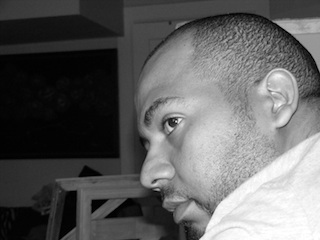
Santo Domingo, once known as Santo Domingo de Guzmán, known as Ciudad Trujillo between 1936 and 1961, is the capital and largest city of the Dominican Republic and the largest metropolitan area in the Caribbean by population. As of 2022, the city and immediate surrounding area had a population of 1,029,110 while the total population is 3,798,699 when including Greater Santo Domingo. The city is coterminous with the boundaries of the Distrito Nacional, itself bordered on three sides by Santo Domingo Province.

Santiago de los Caballeros, often shortened to Santiago, is the second-largest city in the Dominican Republic and the fourth-largest city in the Caribbean by population. It is the capital of Santiago Province and the largest major metropolis in the Cibao region of the country. Santiago is the largest Caribbean city that is not a capital city, and it is also the largest non-coastal metropolis in the Caribbean islands. The city has a total population of 771,748 inhabitants (2022). Santiago is located approximately 155 km (96 mi) northwest of the capital Santo Domingo with an average altitude of 178 m (584 ft).

Nicolás de Jesús López Rodríguez is a Dominican cardinal of the Roman Catholic Church and archbishop emeritus of Santo Domingo.

Ciudad Colonial is the historic central neighborhood of the Dominican Republic's capital Santo Domingo. It is the oldest continuously inhabited European-established settlement in the Americas. The area has been declared a World Heritage Site by UNESCO. It is also known as Zona Colonial or more colloquially as "La Zona".
Jorge Noceda Sánchez was Dominican-born American diplomat, and painter. His surrealist artwork has been collected by international museums. He also worked as a gastroeonerolgist, and a dog breeder.

Edward Telleria is an artist from the Dominican Republic. He is known for his paintings of eyes, horses and roses.

Darío Antonio Suro García-Godoy was a Dominican painter, art critic, and diplomat from La Vega, Dominican Republic, remembered as one of the most influential Dominican artists from the 20th century. Suro's paintings encompassed a wide range of styles from the impressionist mood of his early paintings, to the neo-realism of his maturity, and finally to the abstraction of his later works. Together with his contemporaries Yoryi Morel, Jaime Colson, and Celeste Woss y Gil, he is known as one of the progenitors of modernist art in the Dominican Republic.
Rosa Tavarez was a Dominican painter and engraver.

Clara Ledesma Terrazas was a Dominican-born American artist
Gilberto Hernández Ortega was an artist from the Dominican Republic. He is considered a leading painter of his generation.

Sully Osvaldo de Jesús Bonnelly Canaán is a Dominican-American fashion designer of women's ready-to-wear. Trained at Oscar de La Renta. He is the founder, owner, and creative director of Sully Bonnelly, the brand.

Tito Enrique Canepa Jiménez was a leading Dominican painter of the generation that came of age in the 1930s and 1940s. Canepa's artistic identity was shaped in New York City, where he lived from the age of 21, never returning to stay in his native country. Despite this distance, or perhaps because of it, as León David has pointed out, his works always evince a certain dominicanidad without his setting out to achieve it as a goal — a dominicanidad that is never folkloric. Of the three modernist Dominican painters of the 1930s and 40s singled out by Rafael Díaz Niese as most significant — Canepa, Colson and Suro — Canepa is the one whose artistic activity developed in the most continuous absence from his native country, and the one longest resident in New York. Cánepa is accented in Spanish but not in the original Ligurian.
Ana Emilia Abigaíl Mejia Soliere was a feminist activist, nationalist, literary critic and educator from the Dominican Republic. She completed her primary education at the Salome Ureña de Henríquez School for Girls and Liceo Dominicano. In 1912, she became a teacher in Barcelona where she resided with her family. She returned to the Dominican Republic in 1925 and became a professor of Literature, Pedagogy and History at the Superior Normal School of Santo Domingo. She is one of the leading figures of feminism in the Dominican Republic, founding the Club Nosotras in 1927 and Acción Feminista.

Martha Ellen Davis is an emeritus professor from the University of Florida, anthropologist and ethnomusicologist known for her multifarious work on African diasporic religion and music. Professor Davis' research has defied conventional tenets about Haitian and Dominican folk music, and her cultural preservation projects has raised awareness of the significance of the Samaná Americanos' enclave.

José García Cordero is a Dominican artist that lives and works in Paris.
Alberto Ulloa was a painter, sculptor, and poet from Altamira, Dominican Republic. He was a student of the distinguished Latin American painter Jaime Colson, who also mentored Mario Carreño, the Cuban-Chilean master. Ulloa also studied drawing with illustrator and painter Domingo Liz.

Iliana Emilia García is a Dominican-born, American visual artist and sculptor known for large-scale paintings and installations. She is a co-founder of the Dominican York Proyecto GRÁFICA (DYPG) Collective. She lives in Brooklyn, New York.
Kathleen Teresa Martínez Berry is a Dominican lawyer, archaeologist, and diplomat, best known for her work since 2005 in the search for the tomb of Cleopatra in the Taposiris Magna temple in Egypt. She heads the Egyptian-Dominican mission in Alexandria and is currently minister counselor in charge of cultural affairs at the Dominican embassy in Egypt.

Dominican art comprises all the visual arts and plastic arts made in Dominican Republic. Since ancient times, various groups have inhabited the island of Ayíti/Quisqueya, or Hispaniola ; the history of its art is generally compartmentalized in the same three periods throughout Dominican history: pre-Hispanic or aboriginal Amerindian, Hispanic or colonial, and the national or Dominican period.
Jeannette Miller is a writer, poet, narrator essayist and art historian of Dominican art. She was awarded the National Literature prize from her country in 2011.














